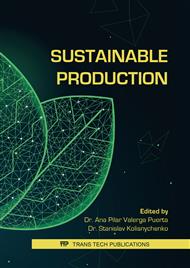p.526
p.533
p.540
p.549
p.557
p.567
p.574
p.580
p.588
Evaluating Energy Efficiency of Production Machine
Abstract:
Industry is one of the most important energy consumption sectors. In the world, industry sector accounts for almost a third of energy consumption (28.3%, in 2012) [1]. According to the U.S. Department of Commerce: “Sustainable manufacturing is the creation of manufactured products through economically-sound processes that minimize negative environmental impacts while conserving energy and natural resources”. Nowadays, due to different environmental issues: the deficit of energy resources, the growing concern of the carbon emission, the environment impact... the awareness of energy consumption takes its important in manufacturing industries. In a manufacturing system, production machine is one of the basis energy consumed devices. In order to achieve the long-term goal "sustainable manufacturing", it is necessary then to take into account the energy efficiency of production machine [2]. In fact, increasing energy efficiency of production machine allows to reduce not only energy costs but also the overall environmental impact. Energy efficiency evaluation of production machine is therefore one of the prerequisites for energy saving in manufacturing [3]. In order to support designers during the design phase of the next production machine generation, in this paper, the principal objective is to propose a method to evaluate energy efficiency of a production machine.
Info:
Periodical:
Pages:
580-587
Citation:
Online since:
March 2019
Authors:
Price:
Сopyright:
© 2019 Trans Tech Publications Ltd. All Rights Reserved
Share:
Citation:



